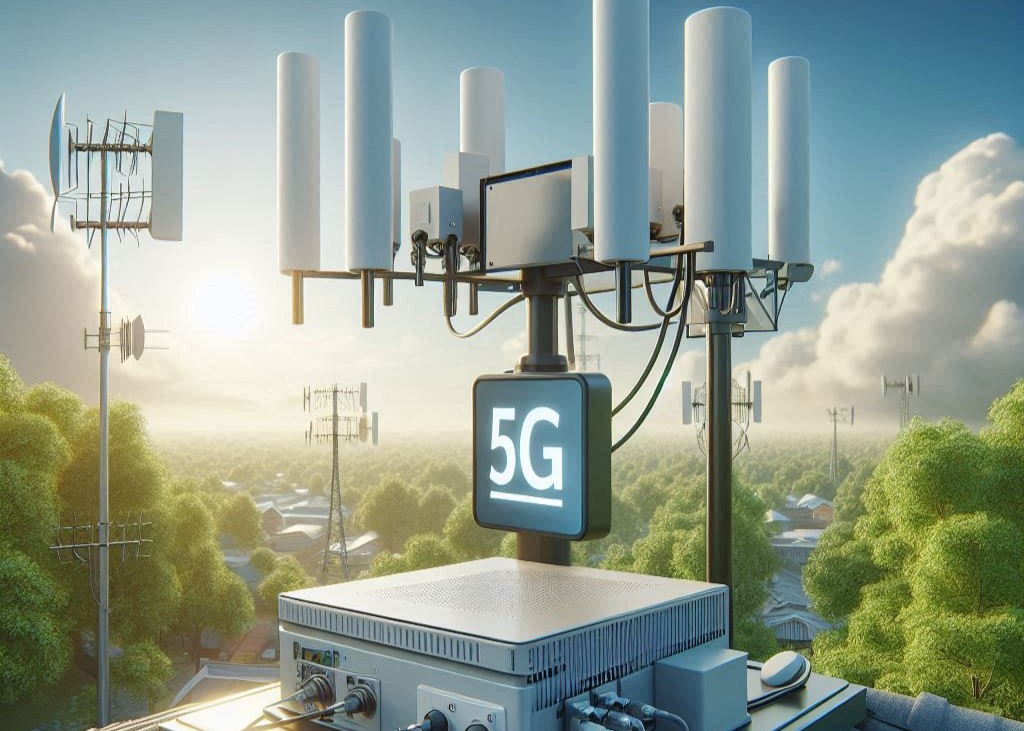Connectivity
5G fixed wireless to drive digital growth
5G FWA will be a catalyst for explosive growth in Africa, writes RAMI OSMAN, MediaTek director of business development for MEA.
According to the Facts and Figures 2023 report, just 37% of Africa’s population uses the Internet, representing a digital divide for hundreds of millions of people. Only a tiny fraction of the continent’s people have access to a high-speed broadband connection at their homes.
For the millions of households waiting for reliable broadband, the arrival of 5G fixed wireless access (FWA) offers a promising and efficient solution. As a cost-effective, scalable solution that can be rolled out rapidly, 5G FWA could be essential in including more of Africa’s population in the digital economy.
This, in turn, will open exciting opportunities in terms of access to education, healthcare, economics, and entertainment. It has been clear for some time that FWA is the most viable way to close the infrastructure gap in remote parts of Africa that are poorly serviced by fixed-line infrastructure.
The promise of 5G FWA in closing Africa’s infrastructure gap
5G could unlock the full potential for FWA by offering a solution that offers significantly higher speeds, lower latencies and superior scalability than earlier solutions such as 3G and 4G/LTE. 5G can, under the right conditions, offer user experiences that compare favourably to fibre. Excluded subscribers no longer need to accept second best.
5G FWA is booming worldwide as network operators invest in the tech to reach underserviced areas and offer a backup for fixed lines. According to GSMA Intelligence, 116 operators in 57 markets had launched 5G FWA services as of September 2023. Global 5G FWA connections are forecast to reach nearly 80-million by 2030, while 5G FWA revenues will reach $44-billion.
For mobile network operators, 5G FWA offers an opportunity to drive further growth as mobile markets reach saturation. In many cases, they can leverage existing licensed spectrum and networking infrastructure – albeit with some differences in deployment and application – to generate new revenues.
The 5G FWA opportunity for operators in Africa is particularly significant, given the size of the addressable market for household broadband connectivity and emerging demand from small, micro and medium-sized enterprises (SMME) for faster and more reliable connectivity.

Rami Osman, MediaTek director of business development for MEA.
The importance of affordable CPE devices
However, the successful implementation of 5G FWA in Africa requires that the ecosystem works together to address several challenges, including the affordability of customer premises equipment (CPE) devices and the need for more investment in backhaul infrastructure to support higher demand.
Affordable, easy-to-use CPE is one of the key ingredients for 5G FWA that is often overlooked. CPE devices, which include routers and mobile hotspots, enable end-users to access 5G FWA services. They must be compact, reliable, quick and easy for non-technical users to set up and work nearly anywhere in the home.
However, the high cost of 5G CPE devices relative to local incomes is a barrier to adoption in some African countries. According to GSMA Intelligence, the cost of a 5G CPE device can exceed 400% of the minimum monthly wage in select African countries like Nigeria, making it inaccessible to most consumers.
The role of chipset manufacturers in reducing CPE costs
Telecom operators can look at options such as subsidies and financing to make CPE devices more affordable for consumers. Policymakers, meanwhile, can help create an enabling environment by reducing duties on CPE devices and supporting infrastructure investments.
Chipset manufacturers like MediaTek play a crucial role in addressing the challenge by developing high-performance chipsets that reduce the overall cost of CPE devices. For example, our T750 chipset enables device manufacturers to build compact and affordable 5G CPE products.
The T750 chipset facilitates 5G speeds of up to 4.7Gbps using existing cellular infrastructure, making it an attractive option for operators looking to expand their broadband offerings in underserved areas. For original design manufacturers (ODMs) and original equipment manufacturers (OEMs), the T750 reduces development times.
5G has already proven itself as a commercially viable last-mile option. It has the potential to revolutionise Africa’s telecom industry by allowing many consumers who don’t have access to fibre to access true broadband speeds and performance for the first time. This is an opportunity that the industry should seize as soon as possible.



















